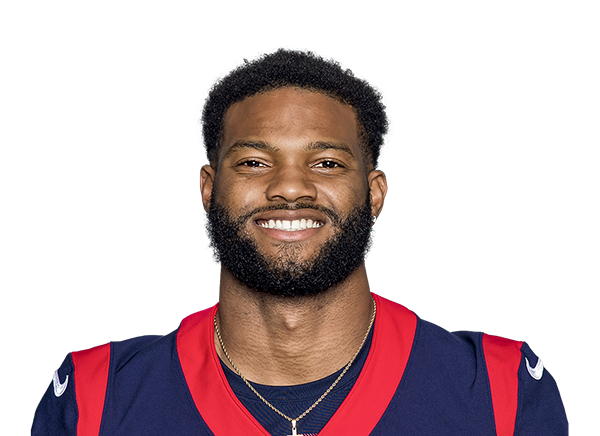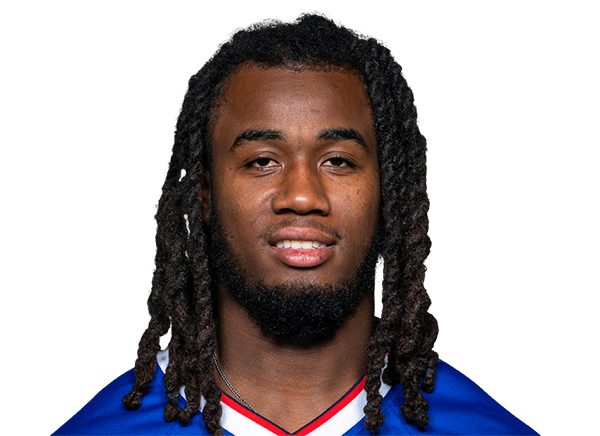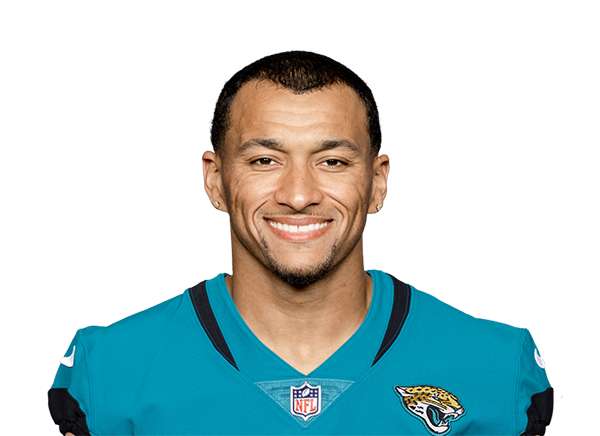Dynasty GAAP Memo: Aging Wide Receivers, Business Life Cycles and Mike Evans

I am a CPA who fits the typical accountant stereotype. I enjoy writing technical accounting memos, accounting research (yes, it is a thing), and analyzing the financial statements of a business. In accounting, you often must evaluate qualitative and quantitative factors during complex transactions to forecast future performance. I have found that the outlook and rationale of evaluating business transactions parallels another interest of mine, dynasty fantasy football.
In dynasty, we are given both quantitative factors (athletic scores, draft capital, college production, etc.) and qualitative factors (camp hype, team situation, injury history, etc.) that we must consider and evaluate to derive an estimate or projection of a player. Then, we must take calculated risks based on our team’s overall financial statements (i.e., current roster and league). I could go on and on with accounting-based puns and comparisons, but I think you get it.
I will note that I will write in the form of “accounting memos”. For anyone who has not been exposed, the format is very standard. Each memo will start with the “purpose”. Next, it will outline the applicable “guidance” or accounting literature utilized and supply background. Last will be the analysis and conclusion. The goal is to state the issue and quickly address it. My write-ups will follow this same logic.
To summarize, welcome to “Good at Analyzing Players” or “GAAP”. And yes, this is a play on “Generally Accepted Accounting Principles” and my wife did come up with it.
Purpose
The purpose of this memo is to evaluate aging NFL WR1s and assess their dynasty values while considering each player’s “life cycle”.
Background
Just like us, businesses have a “life cycle.” In biology, a life cycle represents a series of changes that an organism undergoes, from birth to death. From a business perspective, life cycle refers to the course of events that leads from the beginning to the end of a product, business, or industry. The diagram summarizes this concept:
Each player in dynasty has a “life cycle.” There are players in the “introduction stage“. This would be 2023 rookies like Zay Flowers or Jordan Addison or 2024 rookies like Malik Nabers or Rome Odunze. These are players who have upside but are not fully proven from an NFL perspective and usually range from 21 to 23 years old. Some players are in their “growth stage”. Growth stage means that they have started producing at an elite level but still have some question marks due to situation or boom/bust production and are often between 24 to 25 years old. These players would include Michael Pittman, Brandon Aiyuk, or Cole Kmet. Others have already reached the “maturity stage” of their careers and are around 26 to 28 years old. In this category, we have players like Deebo Samuel and DJ Moore. Finally, we have the “decline stage” of a player’s career. These players are usually 29 or older and, if elite, often have continued production similar to the maturity stage. However, there is always the risk of an age cliff at any moment.
Dynasty managers are well accustomed to this premise. However, this premise is often generalized by age and we never really dive into market inefficiencies it causes. This memo will explore this sentiment and try to identify WR buys who are in the “decline stage” of their careers for 2024. We will consider the following players:
- Stefon Diggs, WR BUF
- Age: Currently 30, will be 31 in 2024
- DLF: 18 overall; WR13
- Davante Adams, WR LV
- Age: Currently 31, will be 32 in 2024
- DLF: 30 overall; WR19
- Cooper Kupp, WR LAR
- Age: Currently 30, will be 31 in 2024
- DLF: 47 overall; WR25
- Mike Evans, WR TB
- Age: Currently 30, will be 31 in 2024
- DLF: 62 overall; WR31
Resources:
- Sleeper: Great interface for looking up historical statistics
- DLF Dynasty Rankings: Best dynasty rankings in the industry
- DLF Average Draft Position (“ADP”) Data: Best resource to gauge current player value. Based on real dynasty startups.
Analysis
First, we need to evaluate the signs of decline for each of these players. In business, there are clear signs the company is starting to decline. When the business begins its decline, it is often hard to see and the owners continue to try and plug the various holes to stop the ship from sinking as opposed to addressing the overarching issue. Below I will outline a few factors that could indicate a decline. These factors are then projected upon fantasy football.
- Diminishing Sales
Diminishing sales is often the number one culprit for failed businesses during the decline phase. The advantages that made their business successful have lost their luster and no innovation has occurred to reinvigorate sales. For dynasty, this is a player’s production. The table below summarizes each of these player’s PPR finish from 2020 to 2023:
Based on this metric, Diggs is the winner. However, in business and dynasty, things can change quickly. Evan’s WR6 status in 2023 cannot be ignored.
Winner: Diggs and Evans
- Loss of Market Share or Use of Old Technology
In a free market economy, one element is always going to be present. There is always going to be competition trying to win and take your market share. One of the best ways to fight off competition in the current marketplace is to utilize technology (i.e., automation, artificial intelligence, etc.) to be more efficient. For dynasty, market share can be indicated by targets. Efficiency can be quantified by what players do with those targets. The tables below summarize each of these player’s targets, receptions, and yardage from 2020 to 2023:
Diggs and Adams are the clear winners as they finish 1 or 2 in each of these metrics.
Winner: Diggs and Adams
- Competitive Advantage
Competitive advantage refers to factors that allow a company to produce goods or services better or more cheaply than its rivals. In dynasty, this can be a lot of things, but the play that generates the most fantasy points are TDs. If a player routinely can find the end zone, they are producers from a fantasy perspective as well.
Adams and Evans are the only two that have averaged > 10 TDs per season.
Winner: Adams and Evans
- Aging Company Principals
It is currently the age of technology and things are constantly changing for businesses. If you or your company are afraid of innovation or creative thinking, you will be replaced. In football, there is a similar paper-thin margin regarding performance. If you are a step too slow or not readily available, you are giving the guy behind you or the team an opportunity to replace you. The best indicators of this from a quantifiable perspective are age (see above) and games played. The sentiment is that as you get older your injury risk and ability to heal start to diminish. This leads to more injuries and time on the sidelines.
I was surprised by how close the outcome was. In my opinion, there are multiple Hall of Famers on this list and long-term availability is a huge factor in long-term production. If you consider that we are only 15 weeks into 2023, three of the four players on average miss less than one game per season. However, Diggs and Evans are a year younger than Adams (30 vs. 31).
Winner: Diggs and Evans
Conclusion
In conclusion, the table below outlines the best historical options based on historical production.
Based on the metrics above, Diggs and Evans are the best dynasty assets to invest in.
The last and most important metric for evaluating a business’s longevity is its intangibles. Things like brand recognition and reputation are pivotal for long-term success. For dynasty, this is quantified based on rankings. Below are the player rankings on DLF:
- Stefon Diggs – 18 overall; WR13
- Davante Adams – 30 overall; WR19
- Cooper Kupp – 47 overall; WR25
- Mike Evans – 62 overall; WR31
Based on this, Evans becomes my buy for the 2024 season within this population of aging WRs. Tied for the most wins above and the cheapest price tag? Sign me up. This is only increased by his contract being up after the 2023 season with Tampa Bay (with rumors they do not plan to re-sign him). While Baker Mayfield has been more than serviceable in 2023, I expect Evans to go ring chasing and get a QB upgrade and still be amongst the NFL’s best downfield threats. Teams like the Kansas City Chiefs also come to mind. While the downside is DeAndre Hopkins or Odell Beckham from 2023, it is worth the risk and his contract will tell us what teams think about him. For instance, Spotrac has his market value at $23.5M and compares him to Stefon Diggs, Cooper Kupp, Tyreek Hill, and Devante Adams who were all 28 or 29 when they signed their current contracts (Evans is 30).
The biggest battle here will be when to buy. Most managers that roster Evans are probably contenders and just saw him finish as a WR1 in 2023 so prices will be inflated currently (especially with championships going on). However, prior to free agency and when rookie fever is at its height before the draft, I would be sending any second for Evans to see if that gets the deal done. I believe he has 2-3 years left and I believe he will get a contract that corroborates that. I would be trying to buy before that happens.
“And I look forward to that because now I’m the guy.”
- Dynasty GAAP Memo: Post-Mortem Rookie Re-Draft - December 12, 2024
- Dynasty GAAP Memo: Buying The WR Dip Or Falling Knife? - November 14, 2024
- Dynasty GAAP Memo: Sam Darnold’s Recession and Recovery - October 3, 2024
































































